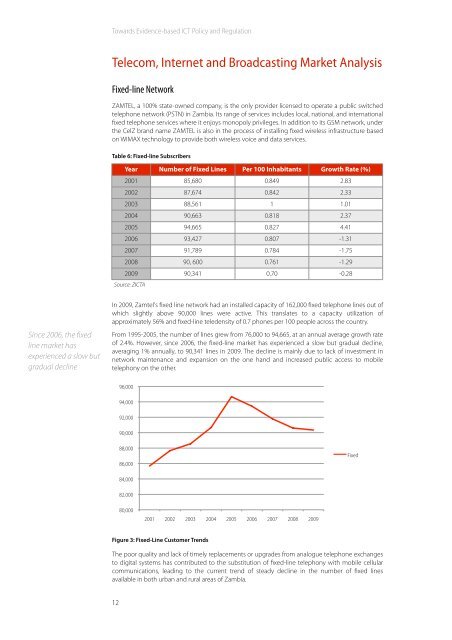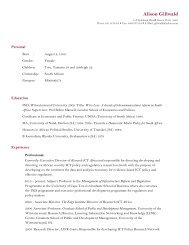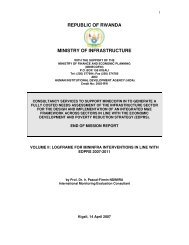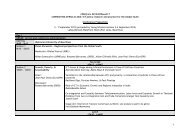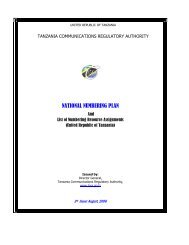Zambia ICT Sector Performance Review 2010 - Research ICT Africa
Zambia ICT Sector Performance Review 2010 - Research ICT Africa
Zambia ICT Sector Performance Review 2010 - Research ICT Africa
Create successful ePaper yourself
Turn your PDF publications into a flip-book with our unique Google optimized e-Paper software.
Towards Evidence-based <strong>ICT</strong> Policy and Regulation<br />
Telecom, Internet and Broadcasting Market Analysis<br />
Fixed-line Network<br />
ZAMTEL, a 100% state-owned company, is the only provider licensed to operate a public switched<br />
telephone network (PSTN) in <strong>Zambia</strong>. Its range of services includes local, national, and international<br />
fixed telephone services where it enjoys monopoly privileges. In addition to its GSM network, under<br />
the CelZ brand name ZAMTEL is also in the process of installing fixed wireless infrastructure based<br />
on WIMAX technology to provide both wireless voice and data services.<br />
Table 6: Fixed-line Subscribers<br />
Year Number of Fixed Lines Per 100 Inhabitants Growth Rate (%)<br />
2001 85,680 0.849 2.83<br />
2002 87,674 0.842 2.33<br />
2003 88,561 1 1.01<br />
2004 90,663 0.818 2.37<br />
2005 94,665 0.827 4.41<br />
2006 93,427 0.807 -1.31<br />
2007 91,789 0.784 -1.75<br />
2008 90, 600 0.761 -1.29<br />
2009 90,341 0.70 -0.28<br />
Source: Z<strong>ICT</strong>A<br />
Since 2006, the fixed<br />
line market has<br />
experienced a slow but<br />
gradual decline<br />
In 2009, Zamtel's fixed line network had an installed capacity of 162,000 fixed telephone lines out of<br />
which slightly above 90,000 lines were active. This translates to a capacity utilization of<br />
approximately 56% and fixed-line teledensity of 0.7 phones per 100 people across the country.<br />
From 1995-2005, the number of lines grew from 76,000 to 94,665, at an annual average growth rate<br />
of 2.4%. However, since 2006, the fixed-line market has experienced a slow but gradual decline,<br />
averaging 1% annually, to 90,341 lines in 2009. The decline is mainly due to lack of investment in<br />
network maintenance and expansion on the one hand and increased public access to mobile<br />
telephony on the other.<br />
96,000<br />
94,000<br />
92,000<br />
90,000<br />
88,000<br />
86,000<br />
Fixed<br />
84,000<br />
82,000<br />
80,000<br />
2001 2002 2003 2004 2005 2006 2007 2008 2009<br />
Figure 3: Fixed-Line Customer Trends<br />
The poor quality and lack of timely replacements or upgrades from analogue telephone exchanges<br />
to digital systems has contributed to the substitution of fixed-line telephony with mobile cellular<br />
communications, leading to the current trend of steady decline in the number of fixed lines<br />
available in both urban and rural areas of <strong>Zambia</strong>.<br />
12


